We’re unofficially declaring “social commerce” as the digital marketing buzzword of 2020… and we don’t mean that in a bad way!
Amidst the ever-fluctuating COVID-19 guidelines, it’s no question that more people are turning to new forms of online shopping (such as social shopping). A crowded mall full of potentially infected people just doesn’t have the same appeal as it used to…
As we approach the holiday season, this only rings more true. Let’s all take a moment to reminisce on our past not-so-peaceful trips to the mall on Black Friday, Boxing Day, or that hectic week before Christmas. Imagining the swarms of people walking shoulder-to-shoulder with no sense of personal space seems like a distant memory in our new 6-feet-apart reality.
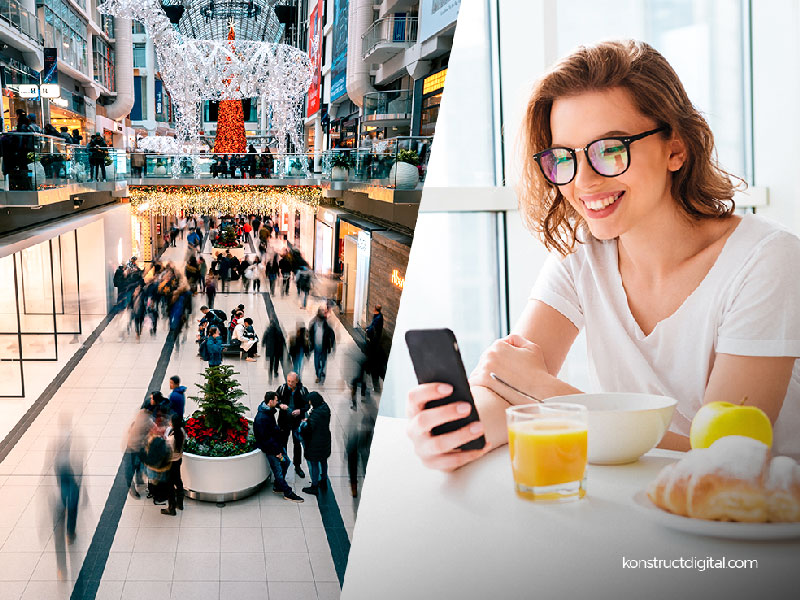
With all that being said, we’re here to give you your friendly reminder that you really need to pivot your marketing strategy if you want any hope of surviving this thing. Otherwise, the holiday season is going to be a tough blow for those who choose to stick to the pre-COVID ways of doing business. It’s just not going to cut it this year.
So… what are your options? While there are many great ways your business can adapt your digital marketing plans in the wake of COVID-19, social commerce is definitely one of the most trendy options.
What is Social Commerce?
Social commerce (AKA social shopping) refers to the use of social networks to buy and sell products. Think Kylie Jenner selling lipstick on Instagram – that’s kinda the idea.
It allows consumers to browse products and complete purchases directly within a social media platform without ever leaving the social media site or app.
The term “social commerce” has actually been around for quite a while and was first introduced by Yahoo! in 2005. It has recently gained a lot of traction as social media platforms have started to roll out their own social commerce features. This is why many people were predicting social commerce’s upcoming retail domination even before the pandemic struck.
Social Commerce Vs. eCommerce
So, why is social commerce becoming such a hot trend? What happened to the regular eCommerce experience?
The purchase journey of social commerce is far more efficient than that of eCommerce. Basically, the streamlined process of social commerce means that you lose fewer customers along the way. It takes significantly fewer clicks for a customer to dive in and make a purchase on a whim, which is known to reduce cart abandonment and bounce rates.
Social Commerce Vs. Social Media Marketing
Social commerce is often confused with social media marketing because the two are quite similar. However, in order for something to be truly considered “social commerce”, the entire shopping experience (including the purchase) must take place within a social platform. On the other hand, social media marketing involves using social media to encourage users to buy products in your physical or online store.
In the examples below, there are a few social commerce-like options that break this rule… Although they’re not technically examples of social commerce, we argue that they’re close enough to include in this article! They take the user far enough through the purchase funnel to create a social commerce-like experience.
The “Big 3” of Social Commerce
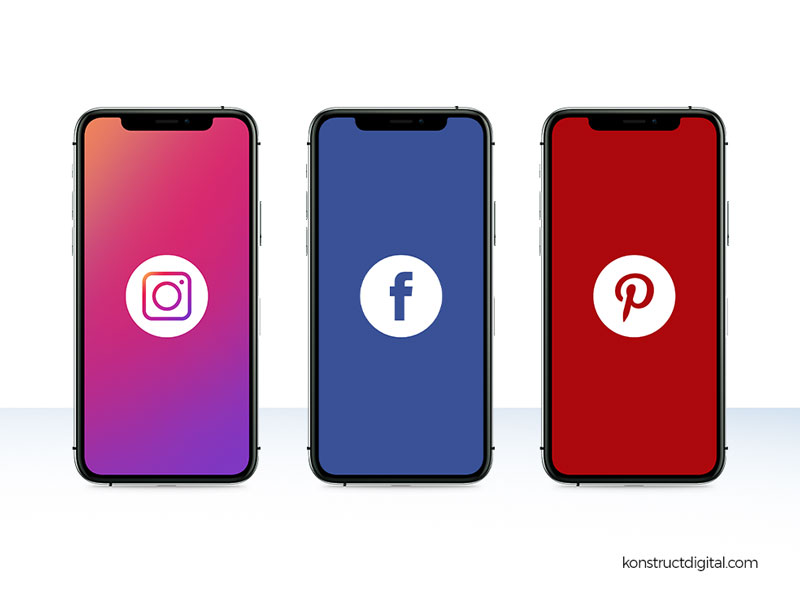
Now that we’ve covered our bases, let’s dig into the good stuff! Here is a rundown of some of the best social commerce opportunities for your business.
First, we’ll give you a laydown of the “Big 3” (Instagram, Facebook, and Pinterest). These social media platforms are probably your best bet if you’re new to social commerce because they have the most established social commerce features. These features are free to use and many businesses have been successful using these social commerce features to boost sales.
Facebook & Instagram Shops
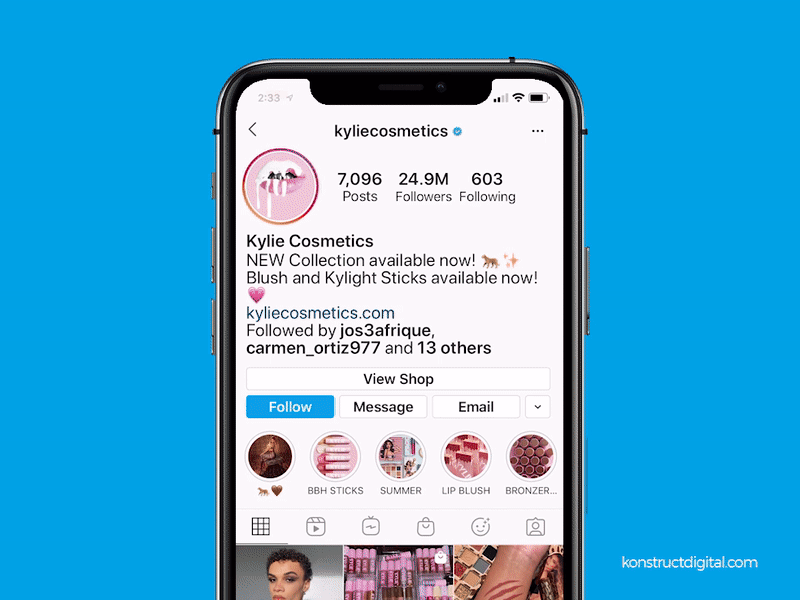
“Shops” is a feature that allows businesses to sell products on Facebook and Instagram. Your business can create a customized digital storefront or “Shop” that is connected to your Facebook and Instagram business accounts. This allows users to easily browse your full collection of products when they view your Instagram profile or Facebook page.
People can also discover your products or services through stories, ads, or browsing through the Shop tab on Instagram. When interested in one of your products, a user may either save the product for later or purchase the product via a link to the product page on your e-commerce website. Easy peasy!
Facebook & Instagram Shoppable Posts
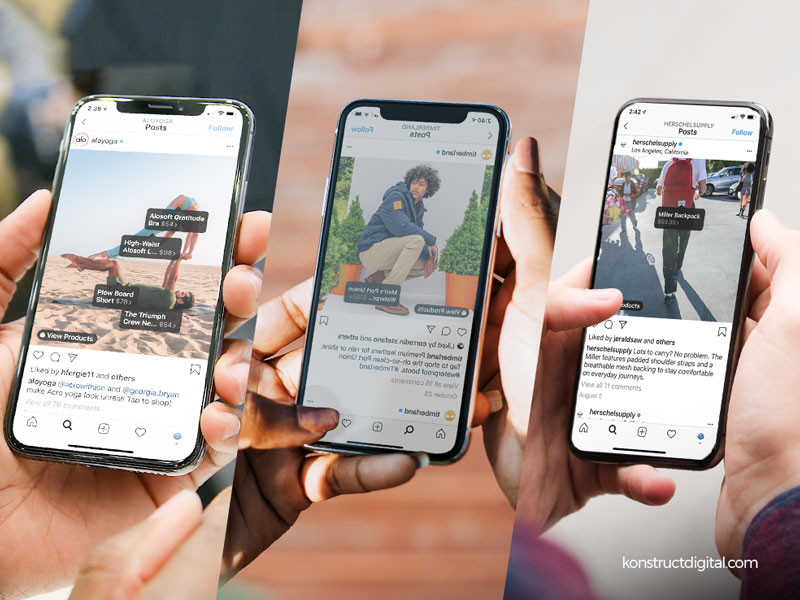
Another exciting aspect of the Shops features is the ability to add product tags in your posts. Facebook and Instagram shoppable posts are a big win for businesses and Facebook or Instagram users! You can tag up to five products per single-image post or 20 products per multi-image post. Users can click the product tag in your posts when they see a product they like. This will direct them to the product page in your Shop where they can easily and efficiently complete their purchase.
While this was previously only available for organic posts, brands can now add product tags directly to Instagram ads within the ads manager! This is a great way to get your shoppable posts in front of a larger audience, and definitely a big win for social commerce!
Facebook & Instagram Checkout
“Checkout” is a relatively new feature for Facebook and Instagram that is basically an extension of the “Shops” features. Checkout allows users to actually complete purchases on Facebook or Instagram, without leaving the platforms! Unlike the original Shops feature that allows businesses to link to product pages on their websites, Checkout takes social commerce to the next level by completely containing the shopping experience in a social platform.
Checkout initially launched in March 2019 with only a few brands gaining access to the feature, but has since rolled out to all eligible US businesses and creators. Hopefully, we’ll see this feature expand into other countries in the coming months.
Keep in mind that using Instagram Checkout could cause you to lose out on collecting valuable consumer data, as all data is stored by Instagram. When setting up your Shop, you’ll have to take this into consideration. Facebook will ask you whether you’d like your customers to complete their purchase on your website or via Checkout on Facebook or Instagram. ⠀
Pinterest Buyable Pins
Pinterest is many people’s go-to place when they’re actively looking for new products and ideas. As marketers know, this is an ideal moment in the buyer’s journey to target a customer!
In 2015, Pinterest launched “Buyable Pins” that allow customers to purchase products without ever leaving the app. Pinterest buyable pins look almost the same as regular pins, except they have a blue “buy it” button next to the “pin it” button.
As a business, posting a buyable pin won’t cost you a dime. However, you may want to promote your buyable pin to reach a larger audience. This would also allow you to target a specific audience, drive particular actions, and measure the impact of your ad.
Recently Pinterest has taken social commerce to the next level with an improved product tagging tool and an updated Shop tab on business profiles. Pinterest explains that the updated Shop tab “enables merchants to transform their shop tab into a storefront with featured in-stock products organized by category, featured product groups and dynamically-created recommendations.” This could definitely make the social commerce experience more appealing for Pinterest users!
More Social Commerce Options
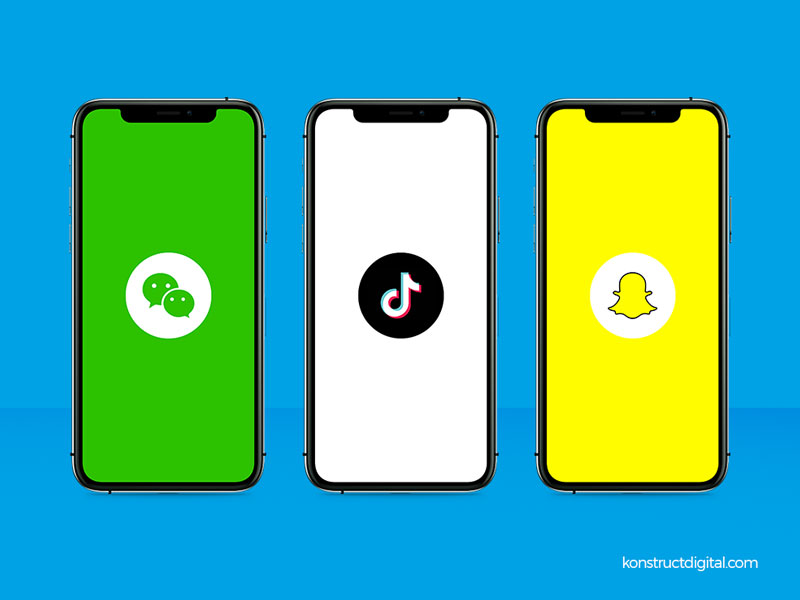
Now that we’ve covered the “Big 3” of social commerce, it’s time for us to throw you some curveballs with your more obscure options. These social commerce-like options may be a good fit for your business if you’ve got money to spend or you’re down with taking a few risks. If not, they’re a good indication of the ways that more popular social commerce features may evolve in the years to come.
Tiktok

TikTok recently came out of social commerce left field with a new Shopify Partnership!
The TikTok Shopify partnership allows Shopify merchants to create and run TikTok marketing campaigns directly from their Shopify dashboard. By downloading the TikTok app from the Shopify app store, merchants can create in-feed shoppable video ads.
This is definitely social commerce like we’ve never seen it before! We’re interested to see if more social media platforms will partner with ecommerce platforms in the future. It seems like a match made in heaven, if you ask us!
If you’re looking to target a younger pre-teen/ teen demographic, TikTok could be an interesting option for your business. Demographics on TikTok are also quickly expanding, so definitely keep this option in mind for older generations in the future!
While WeChat has yet to make a big splash in the Western market, there’s no denying it’s a powerful social commerce contender worldwide. For those who don’t know, WeChat is a hugely popular social media messaging platform that was developed in China.
In 2019, the platform dropped a new feature called “Good Product Circle” that allows users to share various products from different e-commerce stores with their friends. Users can also directly access the products recommended by their friends within the WeChat app. Basically, it takes advantage of both social commerce and word of mouth!
Snapchat
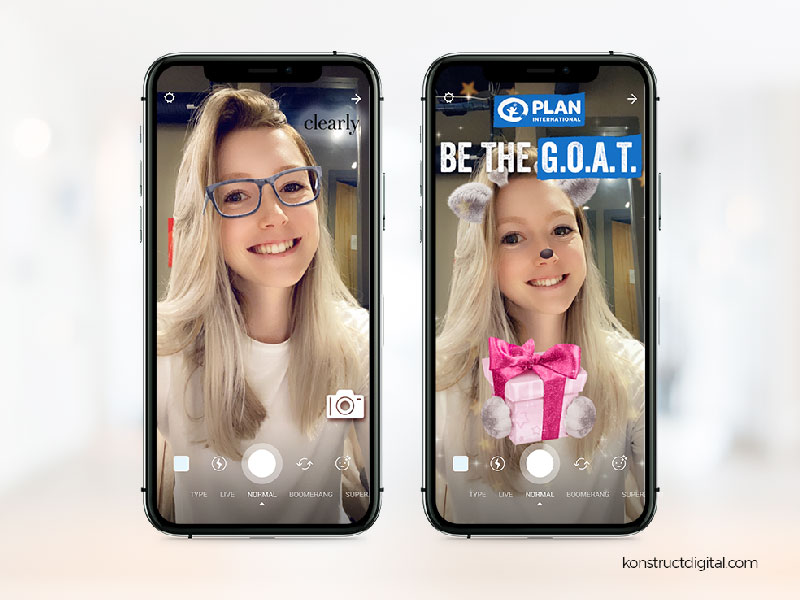
Snapchat is really mixing up the social commerce landscape with their augmented reality (AR) lenses. Snapchat gives retailers the option to create sponsored AR lenses with a button that drives traffic to an eCommerce site. See the photo above for some examples of sponsored Snapchat lenses.
This allows users to easily navigate to a retailer’s online store, app or product page to complete a purchase with a single click! While this isn’t a fully contained social commerce experience, it’s still an option for creatively promoting a brand or products through social media.
Keep in mind that a sponsored filter on Snapchat will cost you a VERY pretty penny with prices ranging from a whopping $450,000 – $700,000 a day! While this means this option is definitely out of reach for most businesses, it’s still an interesting example of the future of social commerce.
Shoploop
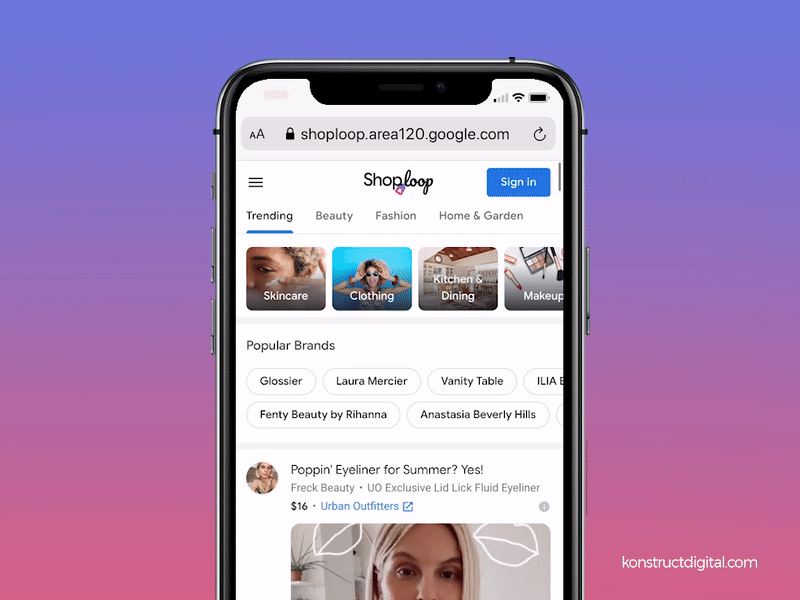
Shoploop is a new shopping platform created by Google’s in-house incubator, Area 120. The platform is basically what would happen if TikTok and the Instagram Shops feature had a baby. It features short TikTok-like videos that are meant to promote products in an entertaining and easily digestible way.
Google states that the purpose of the platform is to help people, discover, evaluate, and buy products all in one place instead of flipping between social media apps and e-commerce sites. In this sense, it’s definitely capitalizing on the social commerce trend!
Shoploop is different from the social commerce features we discussed previously because it’s basically a social media platform built entirely for social commerce.
Typically, users go to their favourite social media platforms to browse entertaining content and product features/ ads are just part of the social media experience. This is likely why shoppable posts or buyable pins are so successful. However, Shoploop encourages users to seek out promotional content… and we’re just not sure that will have the same appeal.
While we encourage you to jump on board with social commerce on Instagram, Facebook, and Pinterest, our verdict for Shoploop is to wait it out and see. This could be an exciting new opportunity for your business eventually, but it has some kinks to work out first.
Now You’re Ready to Kill it with Social Commerce!
Moral of the story: there are tons of social commerce opportunities available to your business! Now it’s time to decide which option is best for you. If you’re a small business with a limited budget, Instagram or Facebook Shops are probably your best bet. However, if your pockets are super deep and you’re in the mood to shake things up, a social commerce option like Snapchat’s VR lenses may be the right move for you!
When choosing which social commerce option is the right investment for your business, it’s best to consider where your audience spends most of their time. It’s useless to sell or promote your products on a social platform if your audience isn’t even there to buy them!
Whatever path you choose, we recommend diving in as soon as you can. We’re predicting that social commerce will be a lasting trend even after COVID-19 and the holiday season have passed. It’s just an all-around win for consumers and businesses alike. Consumers get to discover new products and easily purchase the products they find while browsing through social media, and businesses get to expand their customer base beyond the constraints of physical stores.
Of course, if you’re in need of guidance on how to best take advantage of social commerce for your business, we’re always here to help! Reach out to the social media experts at Konstruct Digital today.
Need help with B2B Content?
Learn more about Konstruct's B2B Content Services
More B2B Content Resources
- Should You Replace Your Content Marketer with AI? Maybe…
- LinkedIn B2B Marketing Examples That Made Us Say, “$h!t, I wish I thought of that!”
- 9 B2B Social Media Dos and Don’ts That’ll Change Your Social Game
- Stop Snoozing on These 7 B2B Content Marketing Trends
- B2B Marketing Copywriting: 10 Tips for Writing Persuasive Copy for Today’s B2B Buyers
- 9 Wow-Worthy B2B Content Marketing Examples To Inspire Your Content Strategy
- 8 Irrefutable B2B Social Media Marketing Benefits
- The Proven Formula for a Rock-Solid LinkedIn Content Strategy
- Content Marketing Statistics: The Facts You Can’t Afford to Ignore
- 999,999 Tips for Creating On-Brand SEO Content


